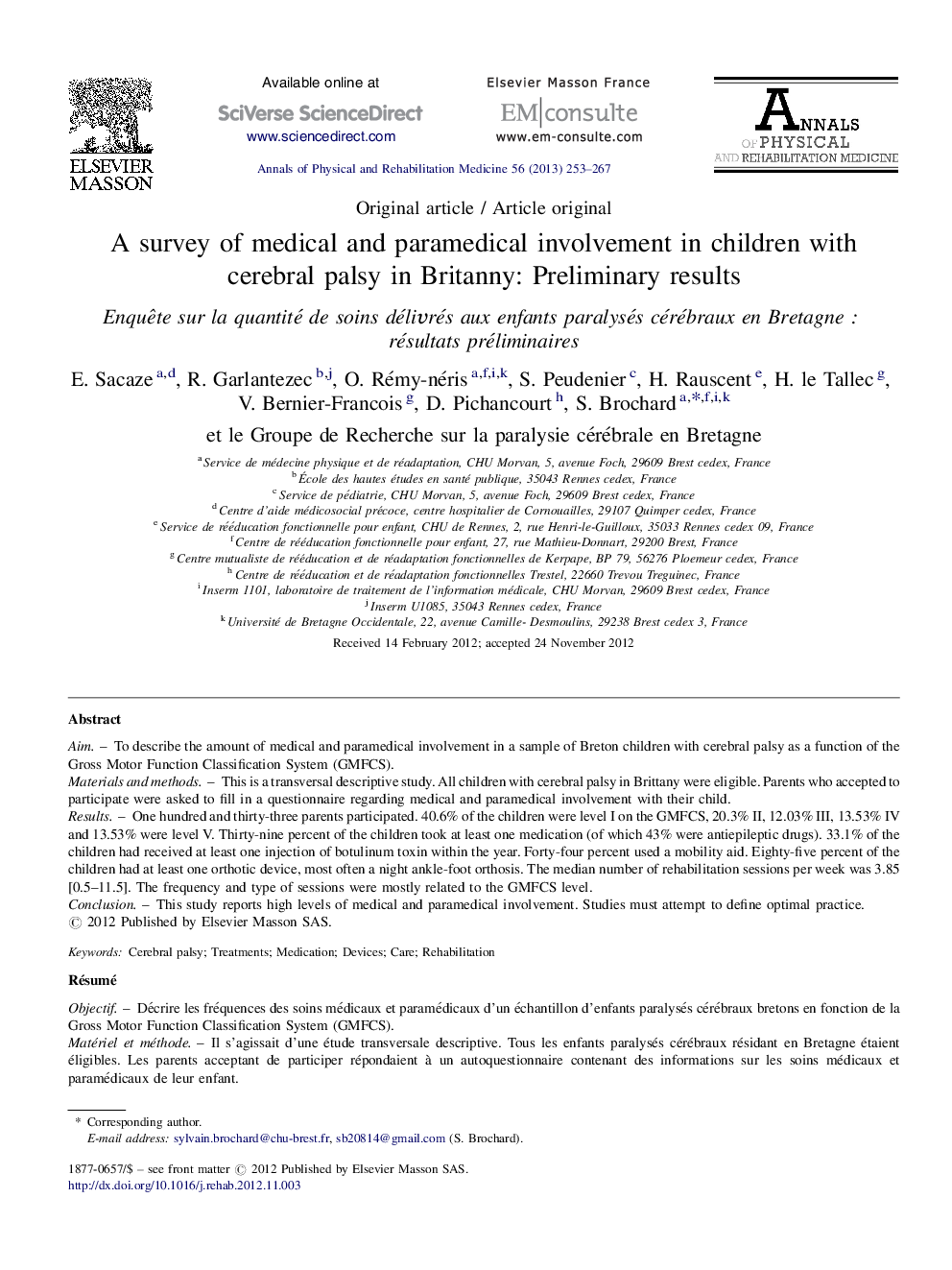| کد مقاله | کد نشریه | سال انتشار | مقاله انگلیسی | نسخه تمام متن |
|---|---|---|---|---|
| 4040917 | 1603317 | 2013 | 15 صفحه PDF | دانلود رایگان |

AimTo describe the amount of medical and paramedical involvement in a sample of Breton children with cerebral palsy as a function of the Gross Motor Function Classification System (GMFCS).Materials and methodsThis is a transversal descriptive study. All children with cerebral palsy in Brittany were eligible. Parents who accepted to participate were asked to fill in a questionnaire regarding medical and paramedical involvement with their child.ResultsOne hundred and thirty-three parents participated. 40.6% of the children were level I on the GMFCS, 20.3% II, 12.03% III, 13.53% IV and 13.53% were level V. Thirty-nine percent of the children took at least one medication (of which 43% were antiepileptic drugs). 33.1% of the children had received at least one injection of botulinum toxin within the year. Forty-four percent used a mobility aid. Eighty-five percent of the children had at least one orthotic device, most often a night ankle-foot orthosis. The median number of rehabilitation sessions per week was 3.85 [0.5–11.5]. The frequency and type of sessions were mostly related to the GMFCS level.ConclusionThis study reports high levels of medical and paramedical involvement. Studies must attempt to define optimal practice.
RésuméObjectifDécrire les fréquences des soins médicaux et paramédicaux d’un échantillon d’enfants paralysés cérébraux bretons en fonction de la Gross Motor Function Classification System (GMFCS).Matériel et méthodeIl s’agissait d’une étude transversale descriptive. Tous les enfants paralysés cérébraux résidant en Bretagne étaient éligibles. Les parents acceptant de participer répondaient à un autoquestionnaire contenant des informations sur les soins médicaux et paramédicaux de leur enfant.RésultatsCent trente-trois parents ont participé. 40,6 % des enfants étaient stade I de la GMFCS, 20,3 % II, 12,03 % III et 13,53 % IV et 13,53 % V. Trente-neuf pour cent des enfants prenaient au moins un médicament (dont 43 % des antiépileptiques). 33,1 % des enfants avaient reçu au moins une injection de toxine dans l’année. Quarante-quatre pour cent des enfants bénéficiaient d’une aide technique au déplacement. Quatre-vingt-cinq pour cent des enfants bénéficiaient d’au moins un appareillage orthotique, principalement une orthèse mollet-plante nocturne. Le nombre médian des prises en charge paramédicales par semaine était de 3,85 [0,5–11,5]. La fréquence et le type de soin étaient le plus souvent associés au niveau de GMFCS.ConclusionCette étude rapporte des fréquences de soins élevées. Les recherches aidant à la définition de pratiques optimales doivent se poursuivre.
Journal: Annals of Physical and Rehabilitation Medicine - Volume 56, Issue 4, May 2013, Pages 253–267